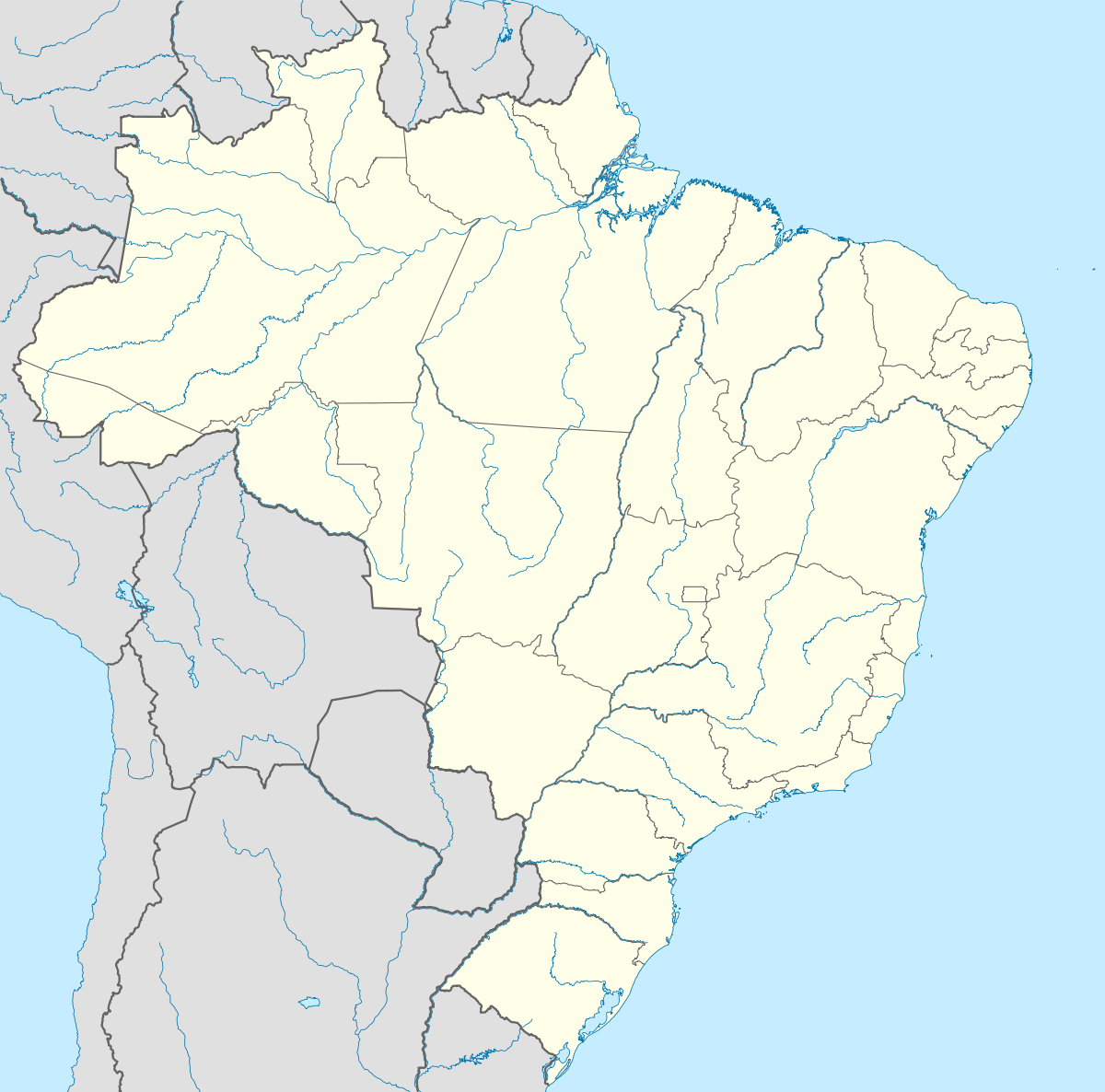Lagoa do Ouro
| Lagoa do Ouro | |
|---|---|
| Municipality | |
| Município de Lagoa do Ouro Municipality of Lagoa do Ouro | |
.png) Location in the state of Pernambuco | |
 Lagoa do Ouro Location in Brazil | |
| Coordinates: 09°07′37″S 36°27′32″W / 9.12694°S 36.45889°WCoordinates: 09°07′37″S 36°27′32″W / 9.12694°S 36.45889°W | |
| Country |
|
| Region | Northeast |
| State |
|
| Founded | December 31, 1958 |
| Government | |
| • Mayor | Marquidoves Viera Marques (Brazilian Socialist Party) |
| Area[1] | |
| • Total | 198.760 km2 (76.742 sq mi) |
| Elevation | 653 m (2,142 ft) |
| Population (2015)[2] | |
| • Total | 12,865 |
| • Density | 65/km2 (170/sq mi) |
| Time zone | BRT (UTC-3) |
| • Summer (DST) | BRST (UTC-2) |
| Postal Code | 55320-000 |
| Area code(s) | +55 87 |
| ISO 3166 code | BR |
| Website | Lagoa do Ouro, PE |
Lagoa do Ouro (Golden Pond) is a city located in the state of Pernambuco, Brazil, located 263 km west from Recife.
History
In early 1902, Captain Amador José Monteiro of the Brazilian National Guard presented a manifesto to the Municipal Council of the municipality Correntes. The council gathered on February 9, 1902 and authorized the first fair of the village. The council also approved of the town's name of Igatauá during this meeting. On December 9, 1938, the name was changed to Lagoa do Ouro due to an urban legend that arose in the village, where nuggets or gold bars were believed to be in a local pond belonging to the estate of João Alves da Silva, who became known as John Gold.[3]
Geography
The municipality contains part of the Pedra Talhada Biological Reserve, a fully protected conservation unit created in 1989.[4]
Climate
Lagoa do Ouro has a tropical savanna climate (Aw) according to the Köppen climate classification.
Economy
The main economic activities in Lagoa do Ouro are based in agribusiness. Beans, manioc, corn, and livestock such as cattle, sheep and poultry are the main agricultural resources within the municipality.
Economic indicators
| GDP x (1000 R$)[5] | GDP pc (R$) | PE |
|---|---|---|
| 39.597 | 3.397 | 0.06% |
Economy by Sector (2006)
| Primary sector | Secondary sector | Service sector |
|---|---|---|
| 20.05% | 8.11% | 71.84% |
Health indicators[6]
| HDI (2000) | Hospitals (2007) | Hospitals beds (2007) | Child mortality rate per 1,000 births (2005) |
|---|---|---|---|
| 0.569 | 1 | 17 | 27.7 |
References
- ↑ "Brazilian Territorial Area. Brazilian Institute of Geography and Statistics (IBGE) (1 July 2013).". Ibge.gov.br. Retrieved 23 June 2016.
- ↑ "2015 population estimates. Brazilian Institute of Geography and Statistics (IBGE) (1 July 2015)." (PDF). Ibge.gov.br. Retrieved 23 June 2016.
- ↑ "Lagoa do Ouro History". Cidades.ibge.gov.br (in Portuguese). Retrieved 2016-06-23.
- ↑ Helaeson de Almeida (November 2006), Plano Operativo de Prevenção e Combate aos Incêndios Florestais da Reserva Biológica de Pedra Talhada (PDF) (in Portuguese), retrieved 2016-04-16
- ↑ Lagoa do Ouro 2007 GDP IBGE page 30
- ↑ PE State site - City by city profile